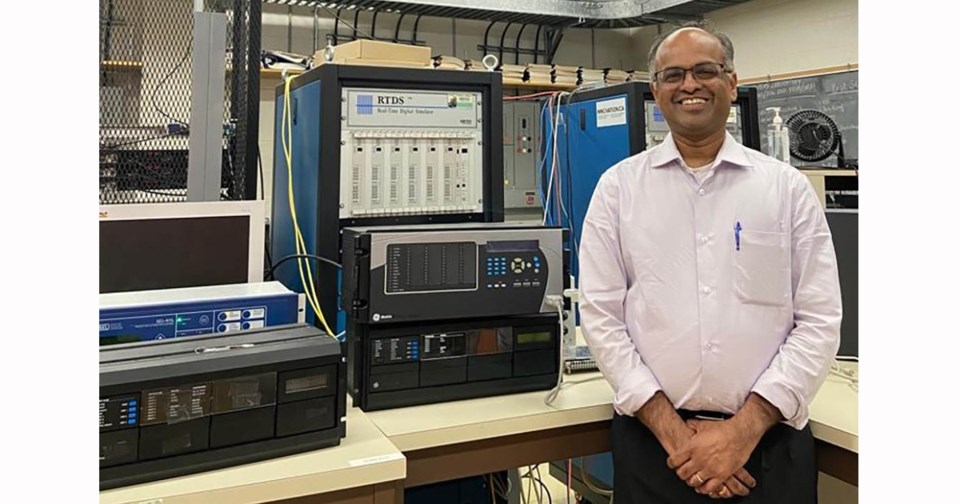SASKATOON –
A proposal for SMR research spearheaded by USask’s Dr. Rama Gokaraju (PhD) has received $360,000 from the Natural Sciences and Engineering Research Council of Canada (NSERC) and the Canadian Nuclear Safety Commission (CNSC).
The NSERC-CNSC Small Modular Reactors Research Grant Initiative is intended to support research, training, and initiatives to increase the scientific information around the capacity and regulation of SMRs in Canada.
SMRs are modern nuclear reactors constructed at a smaller size than standard reactors, making it possible for the different “modules” of an SMR to be constructed off-site and brought to a different location to be assembled.
Gokaraju’s project titled “Reliable and Secure Data-Sharing Architecture, Situational Awareness and Electrical-failure Modelling for SMRs” covers multiple areas of SMR research. Gokaraju, a professor of electrical and computer engineering with USask, is collaborating with University of Regina researchers Dr. Irfan Al-Anbagi (PhD) and Dr. Esam Hussein (PhD) to investigate electrical, digital control rooms, and cyber security issues surrounding SMRs.
“We see a very strong future for small modular reactors,” he said. “This grant is a strong recognition of our work, and we strongly believe there has to be a lot of research and development in this area to make widespread use a reality.”
The NSERC-funded project is divided into multiple parts, and Gokaraju is spearheading an area of research around how SMRs handle electrical fluctuations and failures.
Most SMRs are “load-following” generators, which means they output power as the demand for power requirements change. Gokaraju is using computer modelling of SMRs to examine how the reactors could respond to significant power disturbances and failures.
“A lot of work on the reactor side goes into the safety of operation,” he said. “As an electrical engineer, the expertise I can bring is to the power grid side, to see how electrical failures would impact the reactor side and the electrical grid side operation.”
Gokaraju’s work, in conjunction with Al-Anbagi and Hussein, will explore not only questions of energy and structure, but also of sharing data about SMRs with the public to better connect people with an understanding of the technology for the future.
As Gokaraju puts it, SMRs are crucial for the future of Canada and the world’s power supply.
“We want to see how these SMRs, when they are operating in conjunction with renewable energy, help improve reliability and resiliency levels we have now,” he said.




